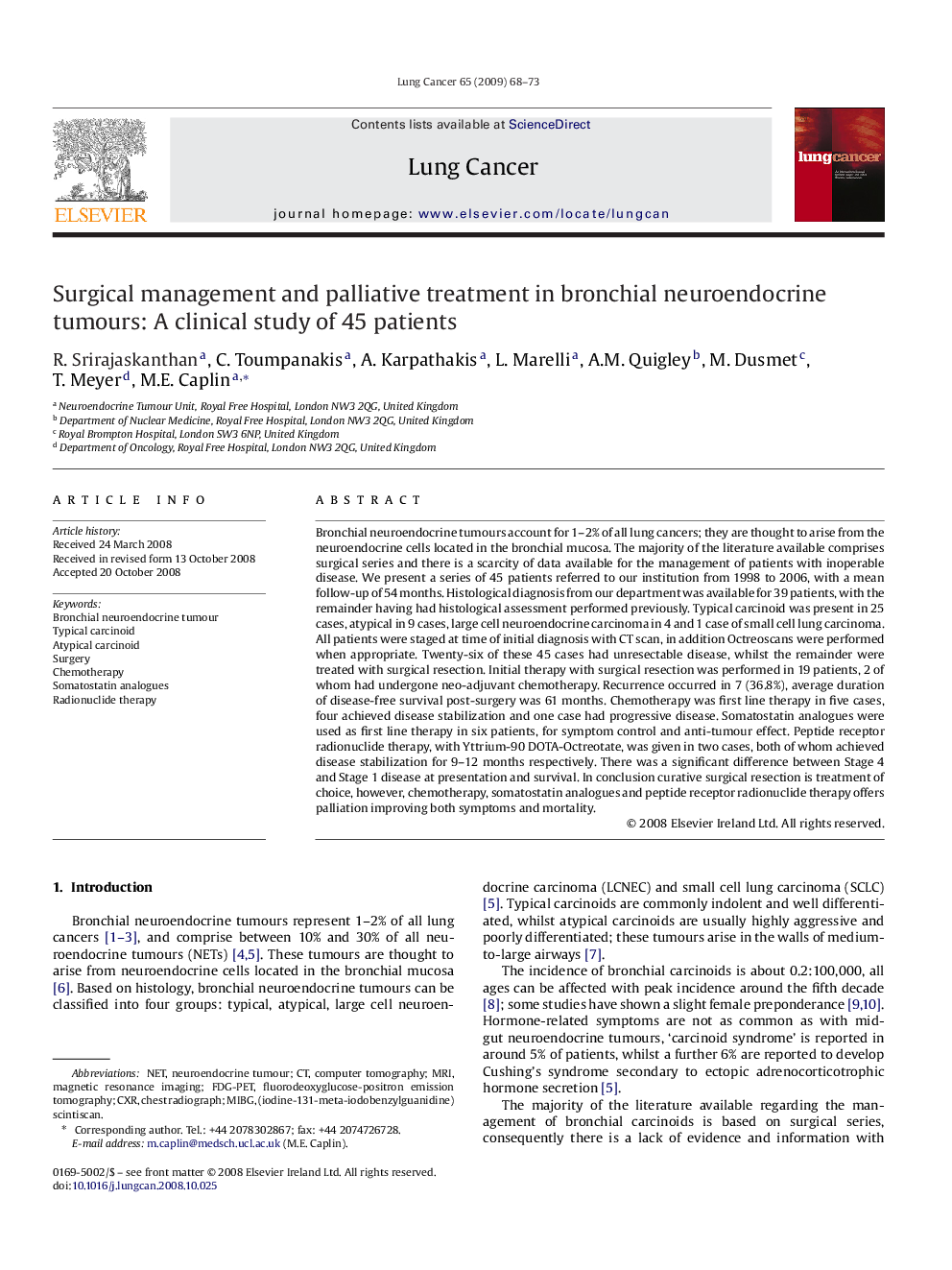| کد مقاله | کد نشریه | سال انتشار | مقاله انگلیسی | نسخه تمام متن |
|---|---|---|---|---|
| 2143291 | 1088342 | 2009 | 6 صفحه PDF | دانلود رایگان |

Bronchial neuroendocrine tumours account for 1–2% of all lung cancers; they are thought to arise from the neuroendocrine cells located in the bronchial mucosa. The majority of the literature available comprises surgical series and there is a scarcity of data available for the management of patients with inoperable disease. We present a series of 45 patients referred to our institution from 1998 to 2006, with a mean follow-up of 54 months. Histological diagnosis from our department was available for 39 patients, with the remainder having had histological assessment performed previously. Typical carcinoid was present in 25 cases, atypical in 9 cases, large cell neuroendocrine carcinoma in 4 and 1 case of small cell lung carcinoma. All patients were staged at time of initial diagnosis with CT scan, in addition Octreoscans were performed when appropriate. Twenty-six of these 45 cases had unresectable disease, whilst the remainder were treated with surgical resection. Initial therapy with surgical resection was performed in 19 patients, 2 of whom had undergone neo-adjuvant chemotherapy. Recurrence occurred in 7 (36.8%), average duration of disease-free survival post-surgery was 61 months. Chemotherapy was first line therapy in five cases, four achieved disease stabilization and one case had progressive disease. Somatostatin analogues were used as first line therapy in six patients, for symptom control and anti-tumour effect. Peptide receptor radionuclide therapy, with Yttrium-90 DOTA-Octreotate, was given in two cases, both of whom achieved disease stabilization for 9–12 months respectively. There was a significant difference between Stage 4 and Stage 1 disease at presentation and survival. In conclusion curative surgical resection is treatment of choice, however, chemotherapy, somatostatin analogues and peptide receptor radionuclide therapy offers palliation improving both symptoms and mortality.
Journal: Lung Cancer - Volume 65, Issue 1, July 2009, Pages 68–73